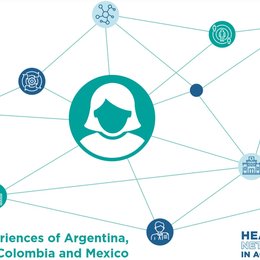
Health Networks in Action: The experiences of Argentina, Brazil, Colombia and Mexico
Dioselina is a 54-year-old divorcée who has no children and lives alone in a large city. She has been unemployed for a year and just started receiving welfare six months ago. As for her health, she has long-term obesity, chronic obstructive pulmonary disease, and diabetes. In recent months, she began to develop foot ulcers because her blood sugar was not being monitored properly, which is attributable in part to difficulty accessing healthcare services and getting medications and lab tests. If she does not receive rapid treatment and more specialized care for the ulcers, they could worsen and require hospitalization.
A growing number of people who seek health care have stories like Dioselina’s. Healthcare systems in Latin America and the Caribbean face significant health challenges affecting all age groups, which cause premature death and take a heavy social and economic toll.
Taking cues from the Declaration of Astana, nations have renewed their political commitment to transforming isolated healthcare services into people-centred services. The primary healthcare (PHC) approach lays the groundwork for achieving this. Integrated Health Service Delivery Networks (IHSDN) based on PHC are the most promising solution for health systems to satisfy the health needs of the population and to address access, efficiency, quality and equity challenges faced by health systems of the world.
Based on four case studies conducted in Argentina, Brazil, Colombia, and Mexico, this book highlights lessons learnt, challenges for the future and recommendations on what it will take to consolidate the IHSDN model in Latin America.
- Source:
Inter-American Devolpment Bank